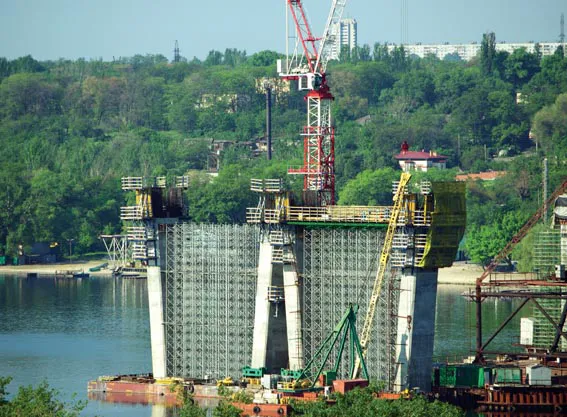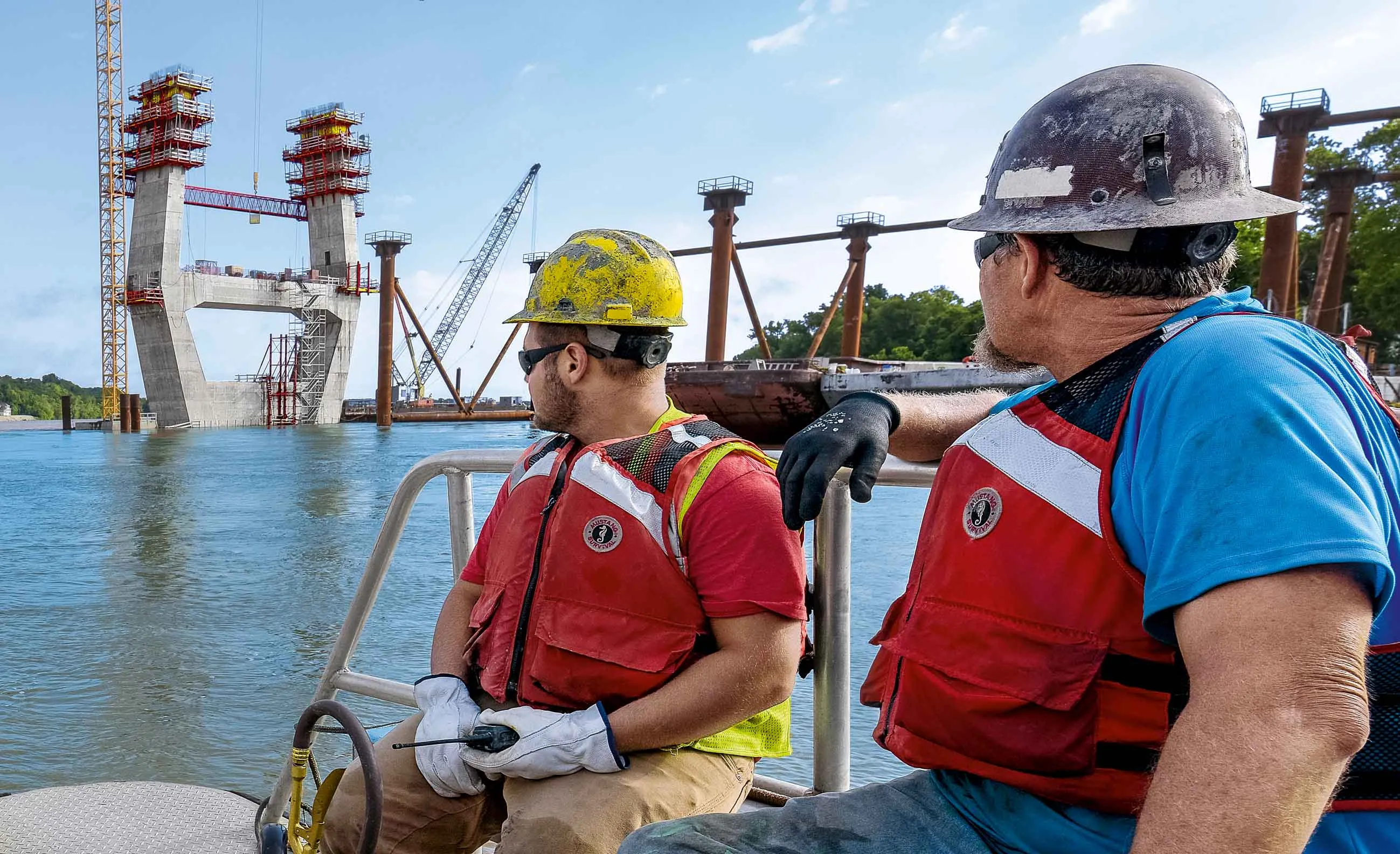In Zaporozhye, the industrial metropolis in Ukraine's south-east, a multi-lane cable stayed bridge is being built alongside an older viaduct. On completion, this large-scale infrastructure project will massively reduce the traffic burden on the existing bridge and significantly improve the daily traffic situation at this major river crossing.
February 28, 2012
Read time: 2 mins

In Zaporozhye, the industrial metropolis in Ukraine's south-east, a multi-lane cable stayed bridge is being built alongside an older viaduct.
On completion, this large-scale infrastructure project will massively reduce the traffic burden on the existing bridge and significantly improve the daily traffic situation at this major river crossing.
The two separate roadway slabs are cable stayed off twin H-shaped suspension towers, each 150m high. The project management team of lead contractor VTA Mostobud opted for an automatic climbing formwork solution from203 Doka for the two suspension towers.
In terms of formwork adaptability the demands were tremendous, because the inclination of the tower legs changes over their height and the structures taper upward, but Doka's SKE 50 automatic climbers worked to the project owner's complete satisfaction and without time-consuming adaptations as the build progressed. For strength, the two towers are of solid cross-section to the full height of the first two concreting sections: the section is hollow from the 11m level up, and per tower leg there are eight SKE 50 automatic climbers carrying 100m² of Doka Top 50 beam formwork, plus a set of Doka shaft formwork.
"The formwork units [Doka SKE 50] are climbed very rapidly using hydraulic cylinders and the forming up and stripping out routines are straightforward, two factors that contribute enormously to speedy progress on this build," says project manager Klymenko Volodymyr.
A safety net safeguards all four platform levels to complete the comprehensive safety concept. Up to where the cross beam ties in at the sixth concreting section, the legs of the towers are inclined at an angle of 5.3° off the vertical, and above that beam level, the tower legs are climbed at an angle of 5.6°. The polygonal cross section tapers 5cm per concreting section. Aggregated over the total of 40 concreting sections, that equates to a difference of 2m between the first and last sections in the towers' tapering cross section.
The hollow section cross beam is 6m high and 20m long to carry the roadway slab and is formed with Doka Top 50 large-area formwork, supported at a height of some 25m by Staxo 100 load-bearing towers.
On completion, this large-scale infrastructure project will massively reduce the traffic burden on the existing bridge and significantly improve the daily traffic situation at this major river crossing.
The two separate roadway slabs are cable stayed off twin H-shaped suspension towers, each 150m high. The project management team of lead contractor VTA Mostobud opted for an automatic climbing formwork solution from
In terms of formwork adaptability the demands were tremendous, because the inclination of the tower legs changes over their height and the structures taper upward, but Doka's SKE 50 automatic climbers worked to the project owner's complete satisfaction and without time-consuming adaptations as the build progressed. For strength, the two towers are of solid cross-section to the full height of the first two concreting sections: the section is hollow from the 11m level up, and per tower leg there are eight SKE 50 automatic climbers carrying 100m² of Doka Top 50 beam formwork, plus a set of Doka shaft formwork.
"The formwork units [Doka SKE 50] are climbed very rapidly using hydraulic cylinders and the forming up and stripping out routines are straightforward, two factors that contribute enormously to speedy progress on this build," says project manager Klymenko Volodymyr.
A safety net safeguards all four platform levels to complete the comprehensive safety concept. Up to where the cross beam ties in at the sixth concreting section, the legs of the towers are inclined at an angle of 5.3° off the vertical, and above that beam level, the tower legs are climbed at an angle of 5.6°. The polygonal cross section tapers 5cm per concreting section. Aggregated over the total of 40 concreting sections, that equates to a difference of 2m between the first and last sections in the towers' tapering cross section.
The hollow section cross beam is 6m high and 20m long to carry the roadway slab and is formed with Doka Top 50 large-area formwork, supported at a height of some 25m by Staxo 100 load-bearing towers.









